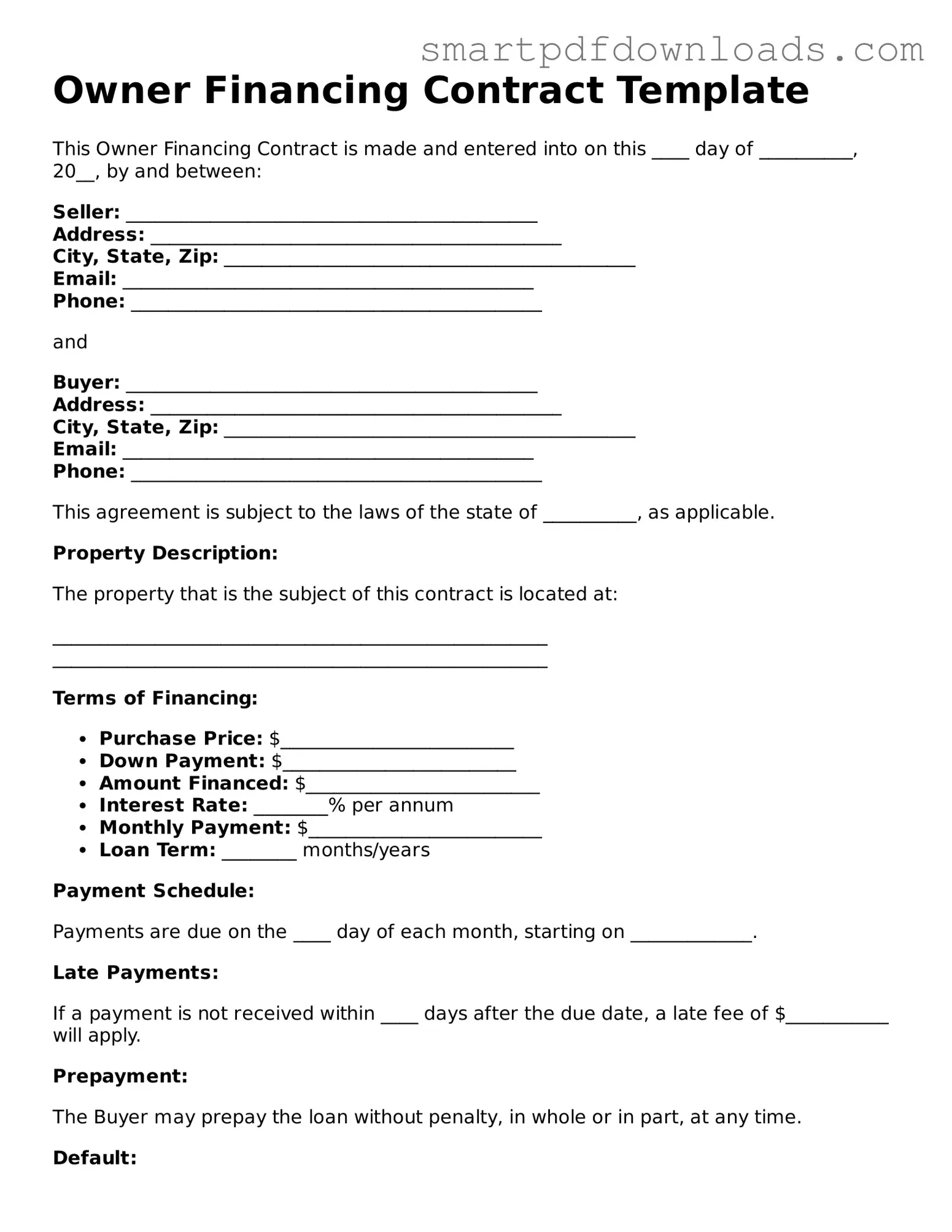Owner Financing Contract Template
This Owner Financing Contract is made and entered into on this ____ day of __________, 20__, by and between:
Seller: ____________________________________________
Address: ____________________________________________
City, State, Zip: ____________________________________________
Email: ____________________________________________
Phone: ____________________________________________
and
Buyer: ____________________________________________
Address: ____________________________________________
City, State, Zip: ____________________________________________
Email: ____________________________________________
Phone: ____________________________________________
This agreement is subject to the laws of the state of __________, as applicable.
Property Description:
The property that is the subject of this contract is located at:
_____________________________________________________
_____________________________________________________
Terms of Financing:
- Purchase Price: $_________________________
- Down Payment: $_________________________
- Amount Financed: $_________________________
- Interest Rate: ________% per annum
- Monthly Payment: $_________________________
- Loan Term: ________ months/years
Payment Schedule:
Payments are due on the ____ day of each month, starting on _____________.
Late Payments:
If a payment is not received within ____ days after the due date, a late fee of $___________ will apply.
Prepayment:
The Buyer may prepay the loan without penalty, in whole or in part, at any time.
Default:
If the Buyer fails to make any payment when due, the Seller has the right to declare the full amount immediately due and payable.
Notice:
Any notice required or permitted under this contract shall be in writing and delivered to the addresses listed above.
Signatures:
Seller Signature: ______________________ Date: ____________
Buyer Signature: ______________________ Date: ____________
Both parties acknowledge that they have read and understood this contract, and they agree to be bound by its terms.
This document is a legally binding agreement and is governed by the laws of the state of __________.
